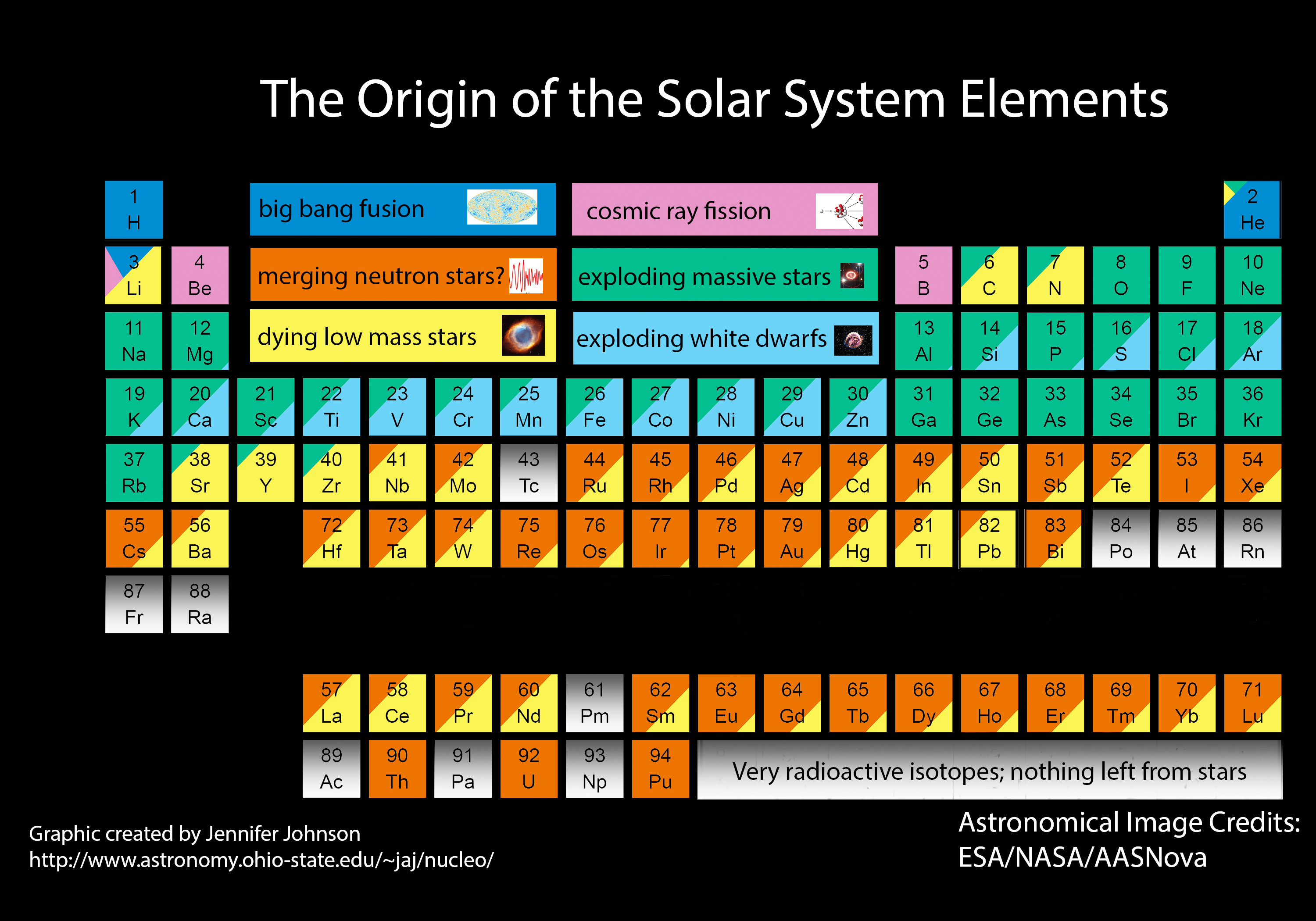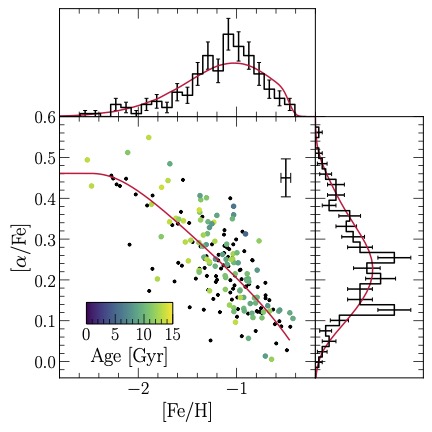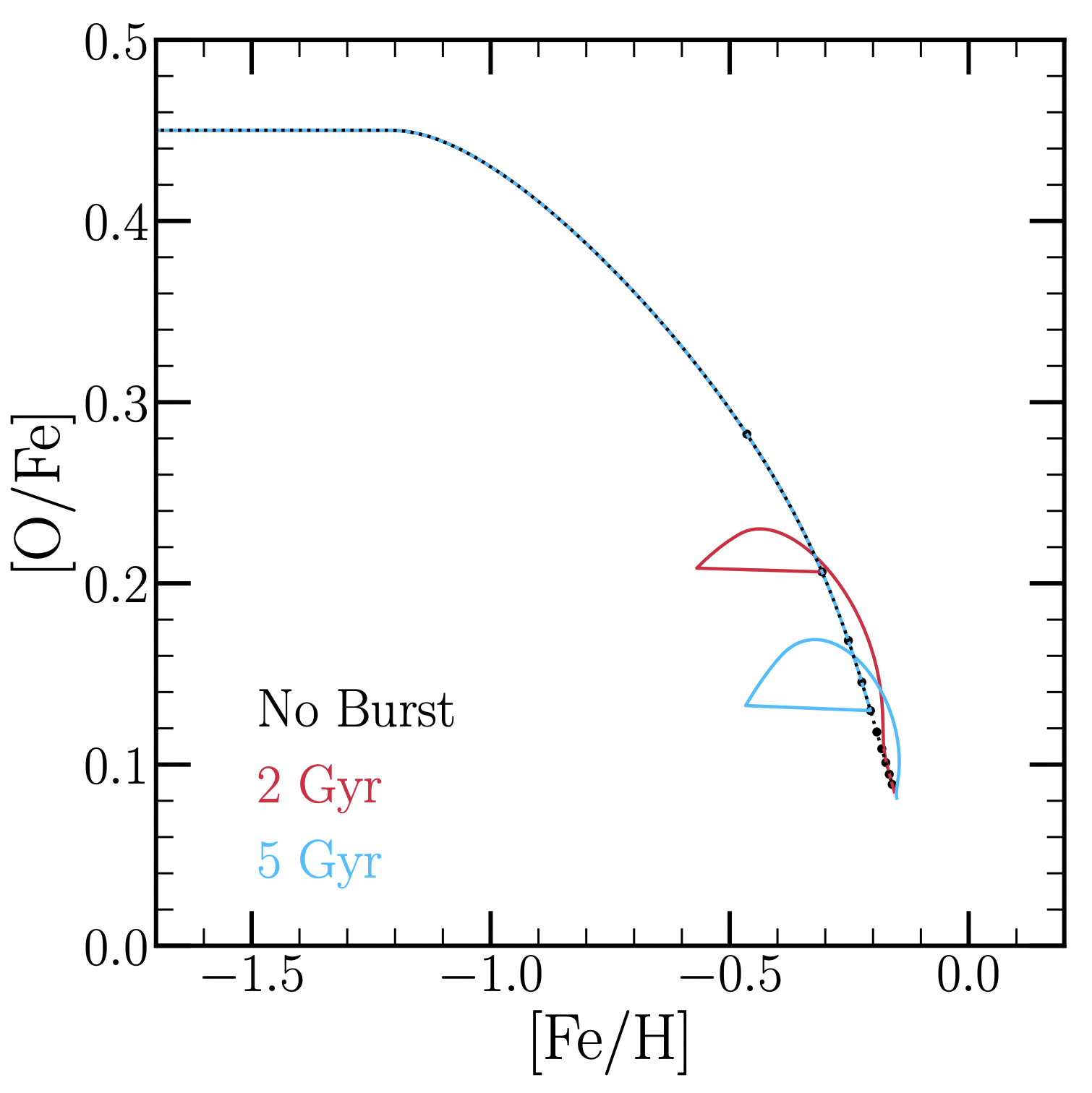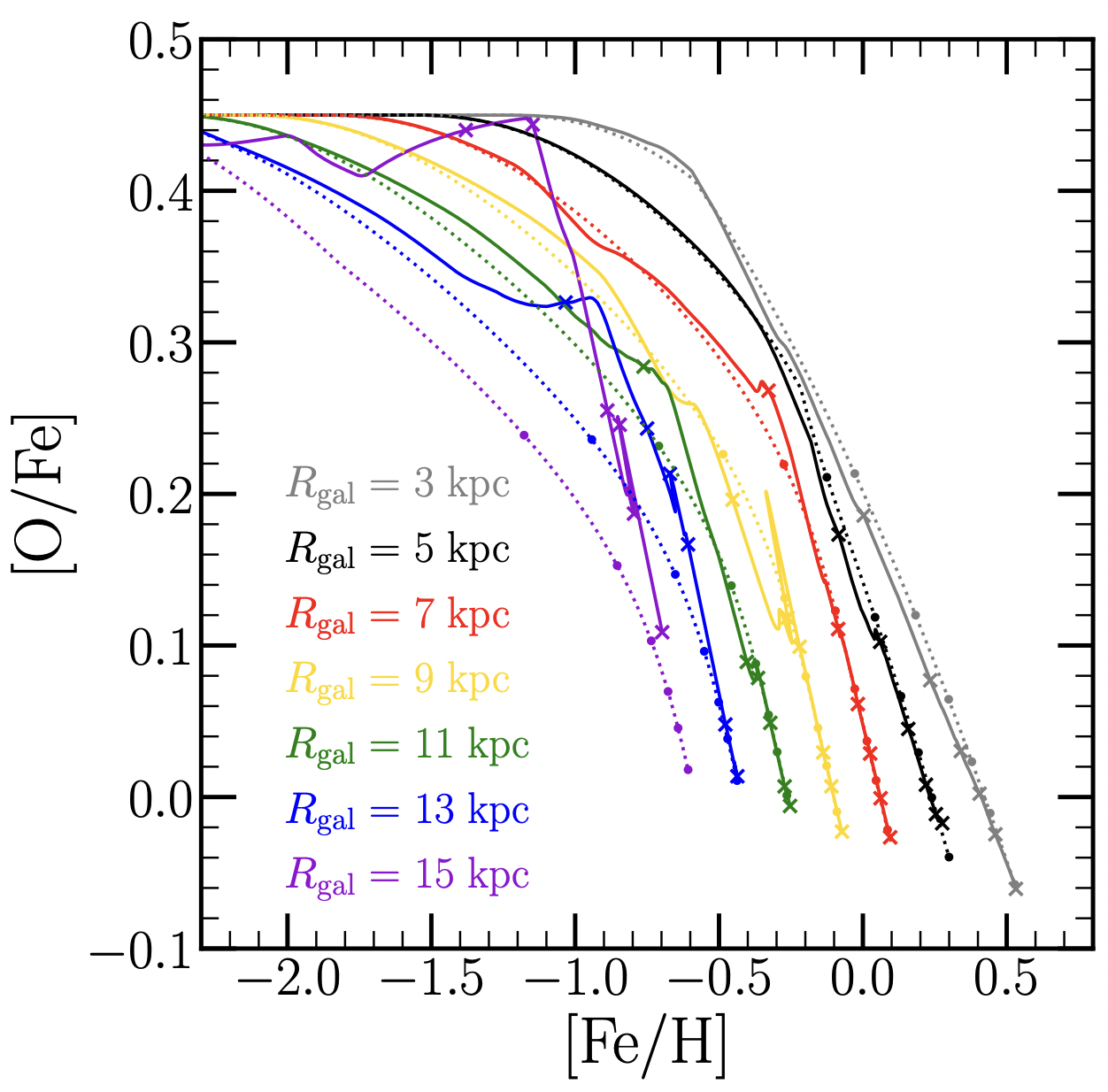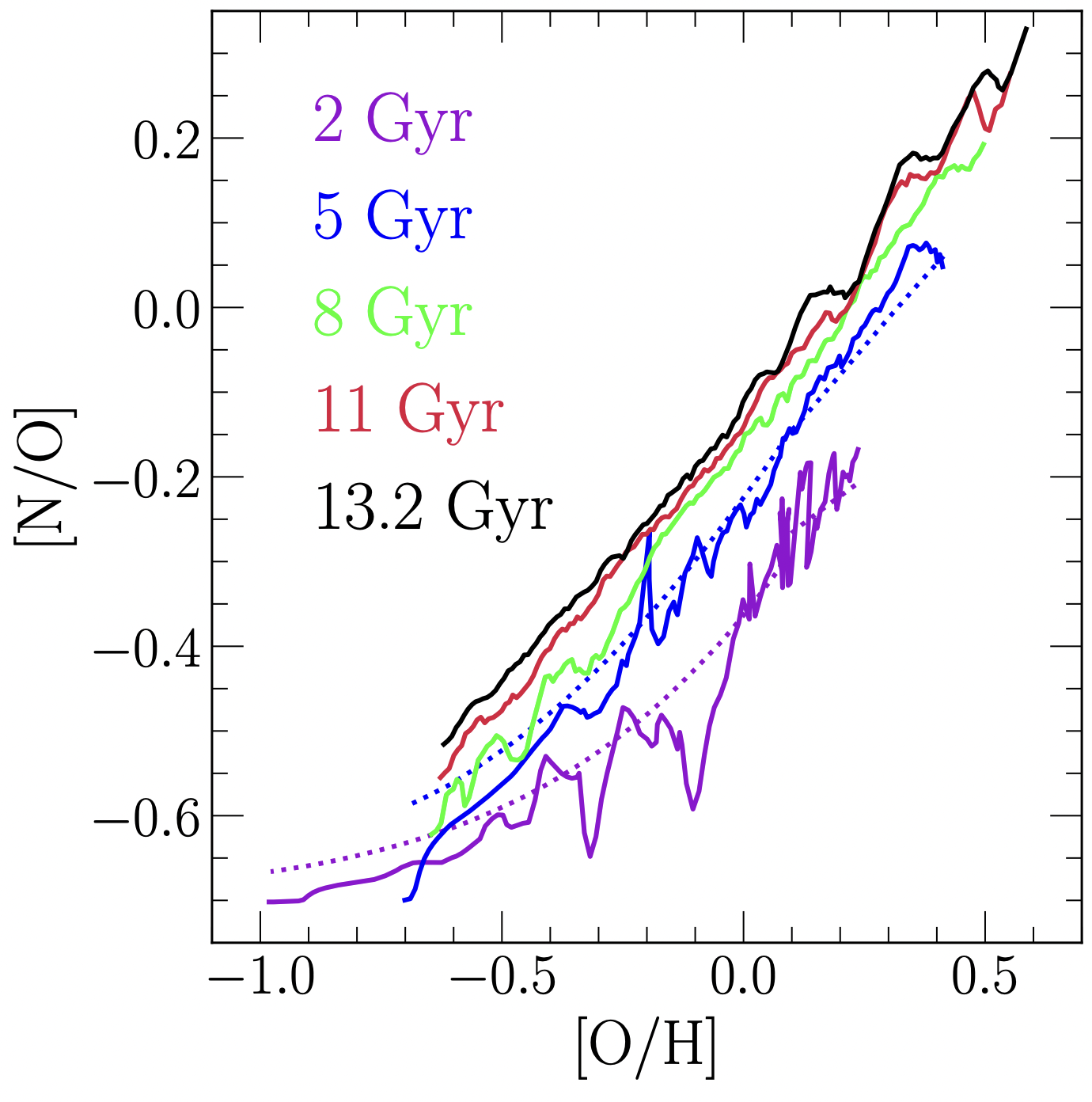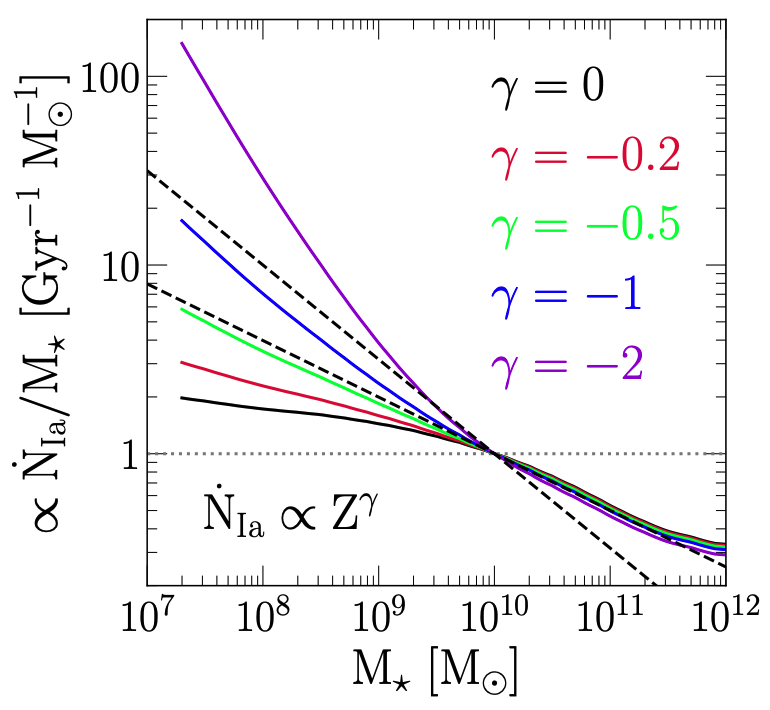What is the assembly history of the Milky Way?
How does its evolution compare to smaller dwarf galaxies?
What are the relative yields of different elements from stars
and supernovae?
I am broadly interesting in galaxy evolution and the origin of
the elements.
Galactic chemical evolution (GCE) bridges the gap between
nuclear physics and astrophysics by combining galactic
processes like star formation with nucleosynthetic yields from
stellar evolution models to estimate enrichment rates and
elemental abundances in the interstellar medium (ISM).
By studying the chemical compositions of stars, we can
understand both the evolutionary histories of their host
galaxies and the stellar evolution processes that shaped their
nucleosynthetic yields.
My work draws heavily on numerical and statistical modeling
applied to large datasets from modern spectroscopic surveys
like APOGEE, SDSS-V's new Milky Way Mapper program, and the H3 Survey.
Background
